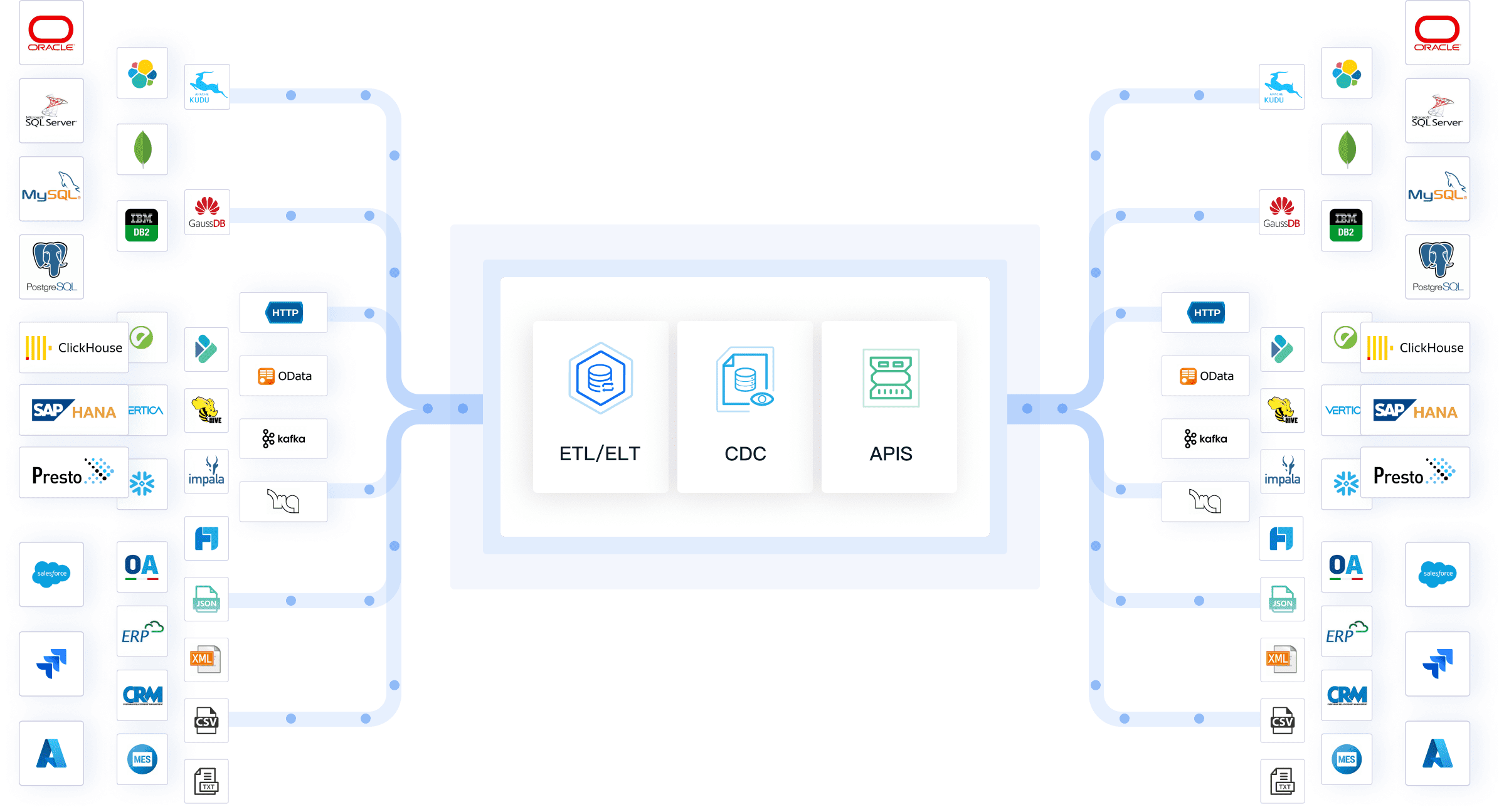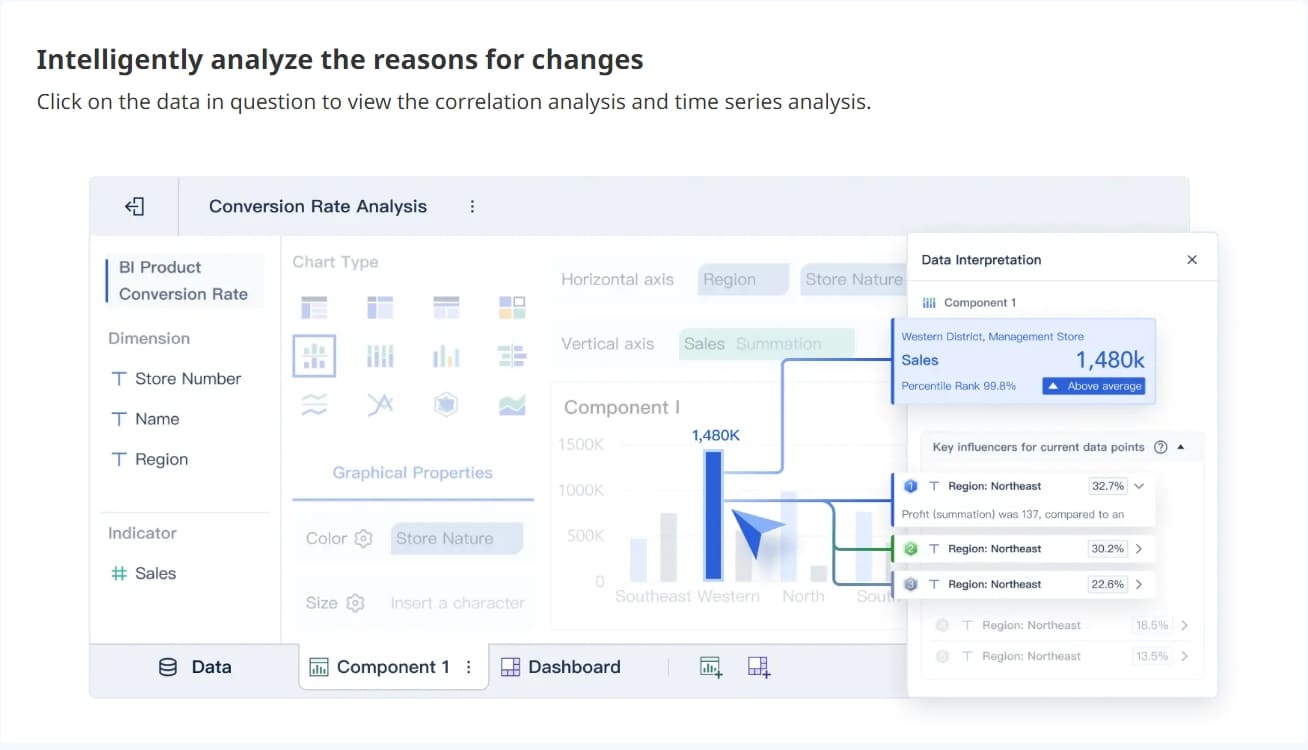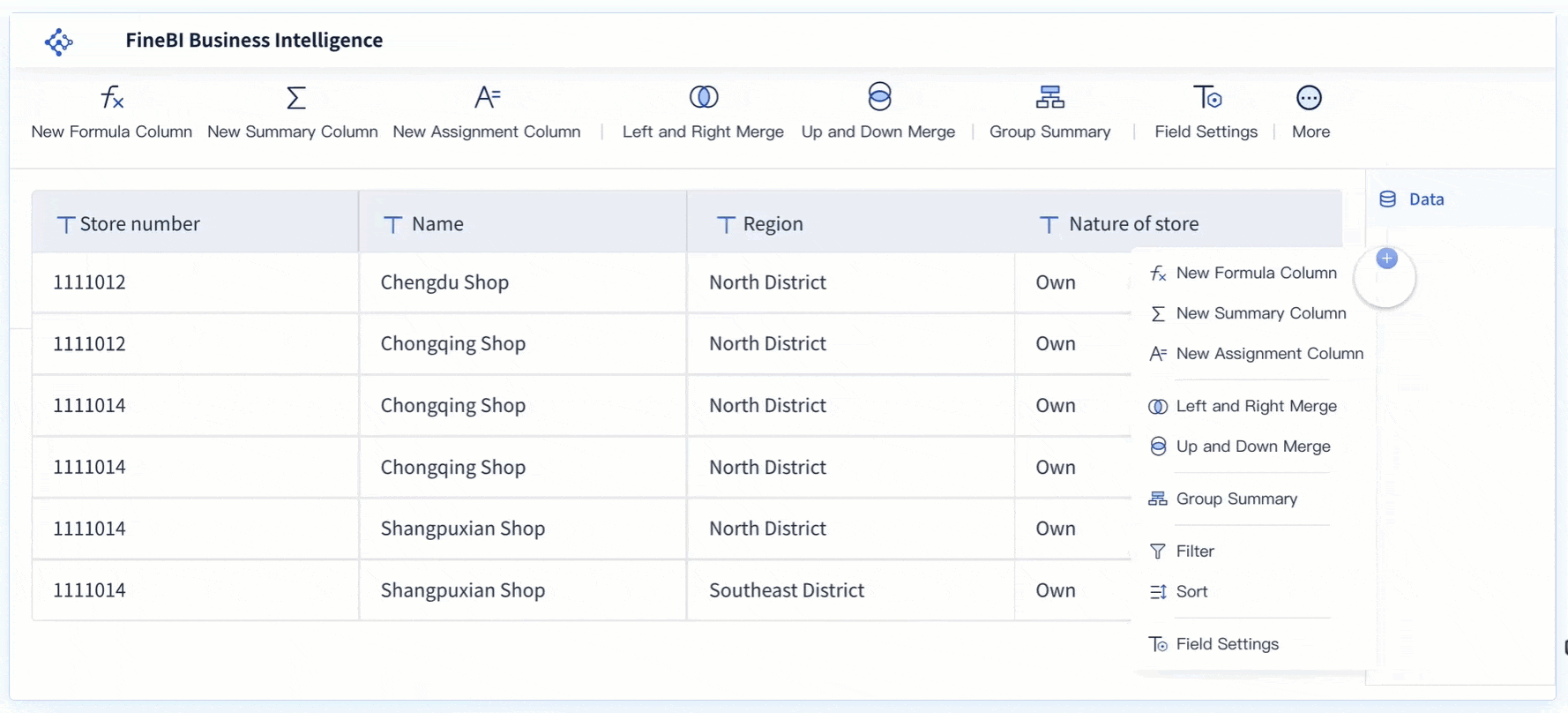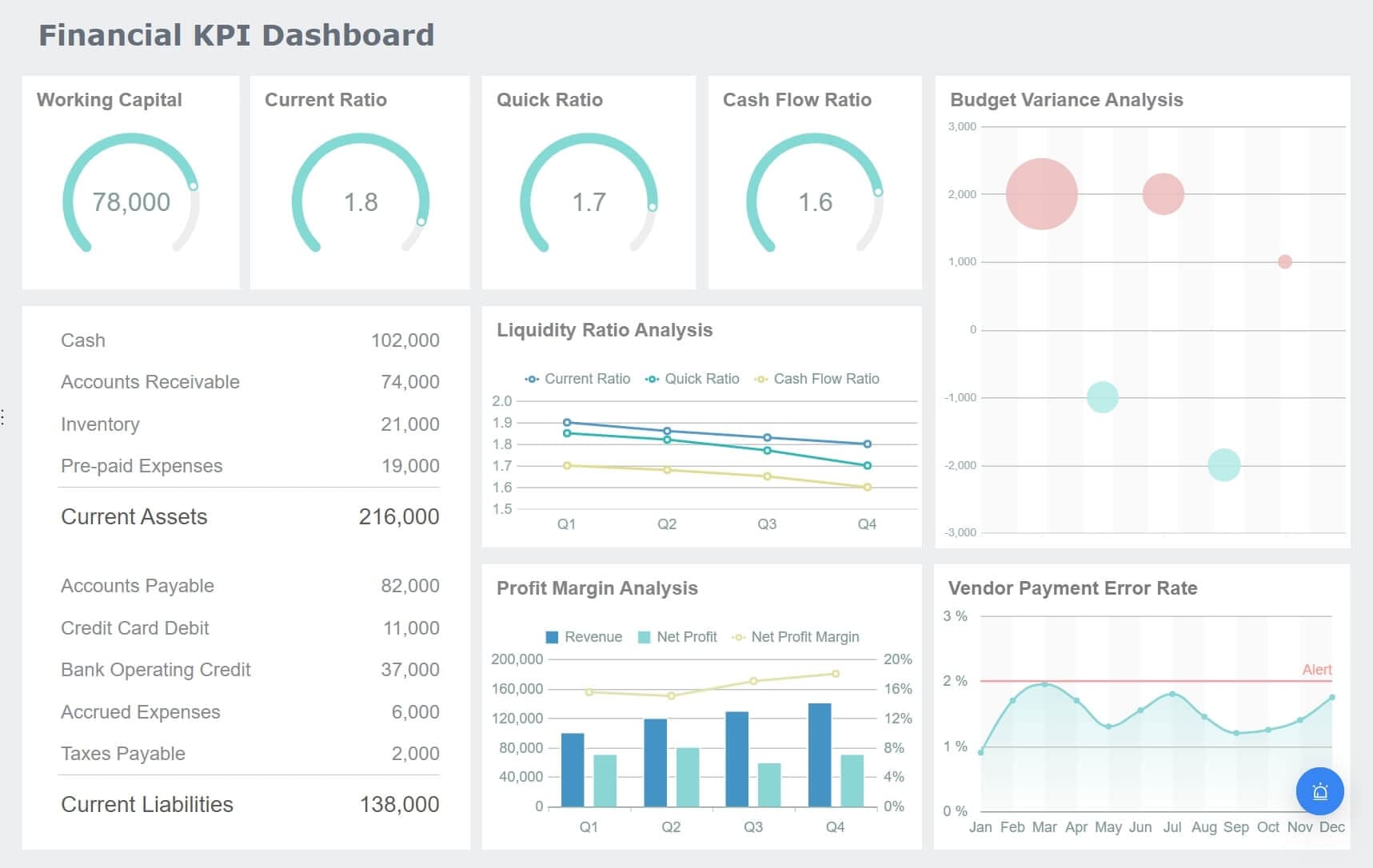

A data custodian plays a pivotal role in managing and safeguarding an organization's data. They ensure the secure storage and maintenance of data, focusing on systems and infrastructure. Their responsibilities include protecting data from theft, unauthorized access, and corruption. In industries like healthcare and finance, where data regulations are stringent, their role becomes even more critical. Data custodians also facilitate data access for analytics, enabling businesses to make informed decisions. Tools like FineDataLink and FineBI support data custodians by enhancing data integration and analysis, ensuring high data quality and compliance.
Understanding the Role of A Data Custodian
Key Responsibilities of A Data Custodian
Data custodians play a vital role in managing and safeguarding an organization's data assets. They ensure that data remains secure, accessible, and compliant with regulations. Their responsibilities encompass several critical areas:
Data Security and Privacy
Data custodians act as the guardians of enterprise data, much like a bank safeguards its clients' money. They implement industry-standard physical and digital security policies to protect data from unauthorized access and breaches. By ensuring that access to data is authorized and controlled, they maintain the privacy and confidentiality of sensitive information. This responsibility extends to developing and maintaining security safeguards for specific data collections, fulfilling data governance policies.
Data Integrity and Quality
Maintaining data integrity and quality is another crucial responsibility of data custodians. They ensure that technical processes sustain data integrity, meaning that data remains accurate, consistent, and reliable over time. Data custodians work closely with data stewards to resolve data quality issues and ensure that data added to datasets aligns with the common data model. They also apply change management practices to maintain database integrity and audit data content and changes.
Skills and Qualifications of A Data Custodian
To effectively fulfill their responsibilities, data custodians must possess a unique set of skills and qualifications:
Technical Skills
Data custodians require strong technical skills to manage and maintain the technical environment where data resides. They must be proficient in database management, data storage, and data security technologies. Familiarity with data integration platforms, such as FineDataLink, enhances their ability to synchronize and manage data across various sources and systems. Additionally, they should understand technical controls that safeguard data and ensure compliance with data governance policies.
Soft Skills
In addition to technical expertise, data custodians need essential soft skills. Effective communication is crucial, as they collaborate with data stewards, data owners, and other stakeholders to ensure data accessibility and quality. Problem-solving skills enable them to address data quality issues and implement solutions efficiently. Attention to detail is vital for maintaining data accuracy and consistency, while adaptability allows them to respond to evolving data management challenges.
Data custodians serve as the technical backbone of an organization, ensuring the secure storage and maintenance of data. Their role is indispensable in safeguarding data assets and supporting effective data management practices.
Data Custodian vs. Data Steward
Definitions and Differences
Data custodians and data stewards play distinct yet complementary roles in data management. Data custodians focus on the technical aspects of data management. They manage data repositories, oversee access controls, and ensure data security. Their responsibilities include implementing backup procedures and maintaining data integrity. In contrast, data stewards concentrate on data quality and lifecycle management. They ensure compliance with privacy regulations and create policies for managing data.
Role Comparison
- Data Custodians:
- Manage data storage and security.
- Implement technical processes for data management.
- Ensure data integrity and oversee data transport.
- Data Stewards:
- Focus on data quality and lifecycle.
- Develop policies for data governance.
- Ensure compliance with privacy standards.
Overlapping Responsibilities
While their primary focuses differ, data custodians and data stewards share some responsibilities. Both roles aim to maintain high data quality and ensure compliance with organizational policies. They collaborate to ensure that data remains accurate, consistent, and secure. This collaboration ensures that data governance policies are effectively implemented.
Collaboration Between Roles
Effective collaboration between data custodians and data stewards is crucial for successful data management. They must work together to ensure that data remains secure, accessible, and of high quality.
Communication Strategies
Data custodians and data stewards should establish clear communication channels. Regular meetings and updates help them stay aligned on data management goals. They should use collaborative tools to share information and track progress. Effective communication ensures that both roles understand their responsibilities and can address any issues promptly.
Joint Responsibilities
Both data custodians and data stewards share joint responsibilities in maintaining data quality and compliance. They must work together to develop and implement data governance policies. By collaborating, they can ensure that data remains secure and accessible. Their joint efforts contribute to the overall success of data management within the organization.
The Importance of A Data Custodian in Data Management

Data custodians play a crucial role in managing an organization's data. They ensure that data remains secure, accurate, and accessible. Their responsibilities extend to implementing security protocols and maintaining data quality, which are essential for effective data management.
Ensuring Data Security
Data security is a top priority for any organization. Data custodians implement robust security protocols to protect sensitive information from unauthorized access and breaches. They act as the technical backbone, ensuring that data storage systems are secure and well-maintained.
Implementing Security Protocols
Data custodians enforce strict security measures to safeguard data. They manage access controls, ensuring that only authorized personnel can access sensitive information. By implementing these protocols, they prevent data breaches and adhere to data regulations. This proactive approach enhances the organization's security posture and reduces the risk of data loss.
Monitoring Data Access
Monitoring data access is another critical responsibility of data custodians. They oversee who accesses the data and how it is used. By keeping a close watch on data access, they can quickly identify and address potential security threats. This vigilance ensures that data remains protected and that any unauthorized access attempts are promptly dealt with.
Maintaining Data Quality
High-quality data is essential for making informed business decisions. Data custodians ensure that data remains accurate, consistent, and reliable. They employ various techniques to maintain data quality and integrity.
Data Validation Techniques
Data custodians use data validation techniques to ensure data accuracy. They verify that data entered into systems meets predefined standards and criteria. This process helps in identifying and correcting errors, ensuring that the data remains reliable for analysis and decision-making.
Regular Data Audits
Regular data audits are conducted by data custodians to maintain data quality. These audits involve reviewing data sets to identify inconsistencies and errors. By conducting regular audits, data custodians ensure that data remains up-to-date and accurate. This practice supports effective data management and enhances the organization's ability to make data-driven decisions.
Data custodians are indispensable in ensuring data security and quality. Their efforts in implementing security protocols and maintaining data integrity contribute significantly to the organization's overall data management strategy.
Challenges Faced by Data Custodian
Data custodians encounter numerous challenges in their role of managing and safeguarding data. These challenges include addressing data breaches, cybersecurity threats, and ensuring compliance with regulations.
Data Breaches and Cybersecurity Threats
Data custodians must remain vigilant against potential data breaches and cybersecurity threats. They play a crucial role in identifying vulnerabilities and implementing response strategies to protect organizational data.
Identifying Vulnerabilities
Data custodians continuously monitor systems to identify potential vulnerabilities. They conduct regular security assessments and audits to detect weaknesses in the data infrastructure. By staying informed about the latest cybersecurity trends and threats, they can proactively address potential risks. This vigilance helps in maintaining the integrity and security of data.
Response Strategies
When a data breach occurs, data custodians must act swiftly to mitigate the impact. They implement response strategies that include isolating affected systems, conducting thorough investigations, and notifying relevant stakeholders. By developing and rehearsing incident response plans, data custodians ensure that the organization can respond effectively to any security incidents. This preparedness minimizes damage and helps restore normal operations quickly.
Compliance with Regulations
Compliance with legal and regulatory requirements is another significant challenge for data custodians. They must understand and implement measures to ensure that data management practices align with relevant laws.
Understanding Legal Requirements
Data custodians must stay informed about the legal requirements governing data management. This includes understanding privacy laws, data protection regulations, and industry-specific standards. By keeping abreast of legislative changes, data custodians ensure that their practices remain compliant. They also develop policies and procedures to guide interactions with integrating authorities and data users, ensuring the safe storage and release of information.
Implementing Compliance Measures
To achieve compliance, data custodians implement various measures. They establish data governance frameworks that outline roles, responsibilities, and processes for managing data. Regular training sessions help staff understand compliance requirements and best practices. By conducting compliance audits, data custodians verify that data management practices adhere to legal standards. These efforts ensure that the organization meets its regulatory obligations and maintains the trust of stakeholders.
Data custodians face complex challenges in their role, from safeguarding against cybersecurity threats to ensuring regulatory compliance. Their proactive approach and strategic planning are essential in overcoming these challenges and maintaining the security and integrity of organizational data.
Best Practices for Data Custodian
Data custodians play a crucial role in managing and safeguarding an organization's data assets. To excel in this role, they should adhere to best practices that enhance data management and security.
Developing a Data Management Plan
A well-structured data management plan serves as the foundation for effective data governance. It outlines the strategies and processes necessary for maintaining data integrity and security.
Setting Clear Objectives
Data custodians must establish clear objectives for their data management plan. These objectives should align with the organization's goals and address key areas such as data security, accessibility, and compliance. By setting specific targets, data custodians can focus their efforts on achieving measurable outcomes. This clarity ensures that all data management activities contribute to the organization's overall success.
Regular Review and Updates
Regularly reviewing and updating the data management plan is essential. Data custodians should assess the effectiveness of current strategies and make necessary adjustments to address emerging challenges. This proactive approach allows them to stay ahead of potential issues and ensure that the plan remains relevant. By keeping the plan up-to-date, data custodians can maintain high standards of data quality and security.
Training and Development
Continuous learning and professional development are vital for data custodians to stay informed about the latest trends and technologies in data management.
Continuous Learning Opportunities
Data custodians should seek out continuous learning opportunities to enhance their skills. Attending workshops, webinars, and conferences can provide valuable insights into new data management techniques and tools. Engaging with industry experts and peers allows data custodians to exchange knowledge and learn from others' experiences. This commitment to learning ensures that they remain competent and capable of addressing evolving data challenges.
Certification Programs
Pursuing certification programs can further validate a data custodian's expertise. Certifications in data management, security, and governance demonstrate a commitment to professional excellence. They provide formal recognition of a data custodian's skills and knowledge, enhancing their credibility within the organization. By obtaining relevant certifications, data custodians can advance their careers and contribute more effectively to their organization's data management efforts.
By following these best practices, data custodians can ensure the effective management and protection of organizational data. Their dedication to developing robust data management plans and pursuing continuous learning opportunities strengthens their ability to safeguard data assets and support informed decision-making.
The Future of Data Custodianship
The role of a data custodian continues to evolve as technology advances. Emerging trends and evolving responsibilities shape the future of data custodianship, requiring professionals to adapt and expand their skill sets.
Emerging Trends
Automation in Data Management
Automation also facilitates real-time data processing, enabling organizations to respond swiftly to changes and make informed decisions. By embracing automation, data custodians can focus on strategic tasks, such as improving data governance and security protocols.
The Role of AI and Machine Learning
Artificial Intelligence (AI) and Machine Learning (ML) are revolutionizing data management. Data custodians leverage these technologies to enhance data analysis and prediction capabilities. AI and ML algorithms identify patterns and trends within datasets, providing valuable insights for decision-making. These technologies also assist in detecting anomalies and potential security threats, bolstering data protection efforts. As AI and ML continue to advance, data custodians must stay informed about their applications and integrate them into their practices.
Evolving Responsibilities
Adapting to New Technologies
By understanding and implementing these technologies, data custodians can improve data integration and synchronization across various systems. They must also ensure that new technologies align with organizational goals and data governance policies.
Expanding Skill Sets
The evolving landscape of data management requires data custodians to expand their skill sets. Technical proficiency remains crucial, but soft skills such as communication and problem-solving are equally important. Data custodians must collaborate with data stewards, data owners, and other stakeholders to ensure data quality and accessibility. They should also develop expertise in emerging technologies like AI and ML to enhance their analytical capabilities. By expanding their skill sets, data custodians can effectively manage data assets and support organizational success.
Tools and Resources for Data Custodian

Data custodians play a vital role in managing and safeguarding an organization's data assets. To excel in their responsibilities, they can leverage advanced tools and resources that enhance data integration and analysis. FineDataLink and FineBI are two powerful solutions that support data custodians in their tasks.
Leveraging FanRuan's FineDataLink
FineDataLink offers a comprehensive platform for data integration, enabling data custodians to manage data efficiently across various sources and systems.

Enhancing Data Integration
FineDataLink simplifies complex data integration tasks with its flexible ETL (Extract, Transform, Load) and ELT (Extract, Load, Transform) capabilities. Data custodians can use these features to ensure high data quality and seamless integration. The platform's low-code approach allows for easy data manipulation, making it accessible even to those with limited technical expertise. By utilizing FineDataLink, data custodians can create a robust data analytics platform that supports informed decision-making.

Real-Time Data Synchronization
Real-time data synchronization is crucial for maintaining up-to-date information. FineDataLink excels in this area by providing tools that enable data custodians to synchronize data across multiple systems with minimal latency. This capability ensures that data remains current and accurate, allowing organizations to respond swiftly to changes and make timely decisions. With FineDataLink, data custodians can efficiently manage data flows and enhance the overall data management process.
Utilizing FineBI for Data Analysis
FineBI empowers data custodians with self-service analytics and visual data interpretation, facilitating better data-driven insights.

Self-Service Analytics
FineBI enables data custodians to perform self-service analytics, allowing them to explore and analyze data independently. This feature reduces reliance on IT departments and speeds up the decision-making process. FineBI's intuitive interface and powerful analytics tools make it easy for users to generate reports and dashboards, providing actionable insights that drive business growth.

Visual Data Interpretation
Visual data interpretation is a key strength of FineBI. The platform offers a wide range of visualization options, enabling data custodians to present data in a clear and understandable manner. By transforming raw data into insightful visualizations, FineBI helps organizations track key performance indicators, identify trends, and predict future outcomes. This visual approach enhances communication and understanding among stakeholders, supporting effective data management and strategic planning.

By leveraging FineDataLink and FineBI, data custodians can enhance their data management capabilities, ensuring data quality and accessibility. These tools provide valuable support in the ever-evolving landscape of data management, empowering data custodians to fulfill their roles effectively.
Data custodians play a pivotal role in ensuring the integrity, accuracy, and consistency of an organization's data. They manage data repositories, enforce security protocols, and maintain data quality, which are essential for effective data governance. Their efforts in safeguarding data assets contribute significantly to organizational success. By leveraging tools like FineDataLink and FineBI, data custodians enhance their capabilities in data integration and analysis. For those interested in delving deeper into this field, exploring further resources and staying updated on emerging trends will prove invaluable.
FAQ
Data custodians are responsible for the safekeeping, maintenance, and management of data assets within an organization. They ensure that data remains accessible, private, and compliant with regulations. Their role involves implementing data governance policies, maintaining data integrity, and facilitating access to information while safeguarding privacy and security standards.
Data custodians implement robust security measures to protect data from unauthorized access and breaches. They manage access controls, ensuring only authorized personnel can access sensitive information. By enforcing these protocols, they prevent data breaches and adhere to data regulations, enhancing the organization's security posture.
Data custodians encounter several challenges, including addressing data breaches, cybersecurity threats, and ensuring compliance with regulations. They must remain vigilant against potential vulnerabilities and implement response strategies to protect organizational data. Compliance with legal and regulatory requirements also poses a significant challenge, requiring them to stay informed about privacy laws and data protection regulations.
Maintaining data quality involves ensuring that data remains accurate, consistent, and reliable. Data custodians use data validation techniques to verify that data meets predefined standards and criteria. Regular data audits help identify inconsistencies and errors, ensuring that data remains up-to-date and accurate for analysis and decision-making.
Data custodians leverage advanced tools and resources to enhance data integration and analysis. Solutions like FineDataLink and FineBI support data custodians by simplifying complex data integration tasks and providing self-service analytics. These tools enable data custodians to manage data efficiently across various sources and systems, ensuring high data quality and accessibility.
Continue Reading About Data Custodian
2025 Best Data Integration Solutions and Selection Guide
Explore top data integration solutions for 2025, enhancing data management and operational efficiency with leading platforms like Fivetran and Talend.
Howard
Dec 19, 2024
2025 Data Pipeline Examples: Learn & Master with Ease!
Unlock 2025’s Data Pipeline Examples! Discover how they automate data flow, boost quality, and deliver real-time insights for smarter business decisions.
Howard
Feb 24, 2025
2025's Best Data Validation Tools: Top 7 Picks
Explore the top 7 data validation tools of 2025, featuring key features, benefits, user experiences, and pricing to ensure accurate and reliable data.
Howard
Aug 09, 2024
Best Data Integration Platforms to Use in 2025
Explore the best data integration platforms for 2025, including cloud-based, on-premises, and hybrid solutions. Learn about key features, benefits, and top players.
Howard
Jun 20, 2024
Best Data Integration Vendors for Seamless Workflows
Discover the top 20 data integration vendors of 2025 for seamless workflows. Compare tools like Talend, AWS Glue, and Fivetran to optimize your data processes.
Howard
Jan 22, 2025
Best Data Management Tools of 2025
Explore the best data management tools of 2025, including FineDataLink, Talend, and Snowflake. Learn about their features, pros, cons, and ideal use cases.
Howard
Aug 04, 2024




